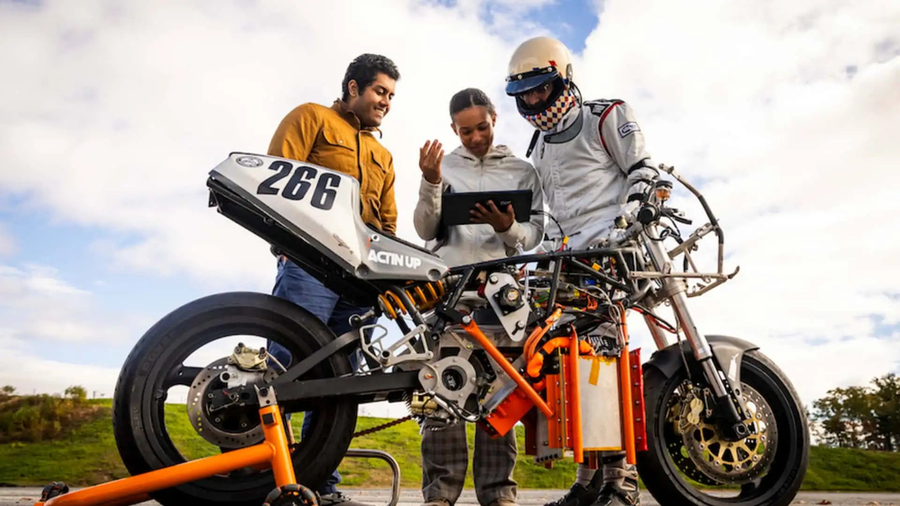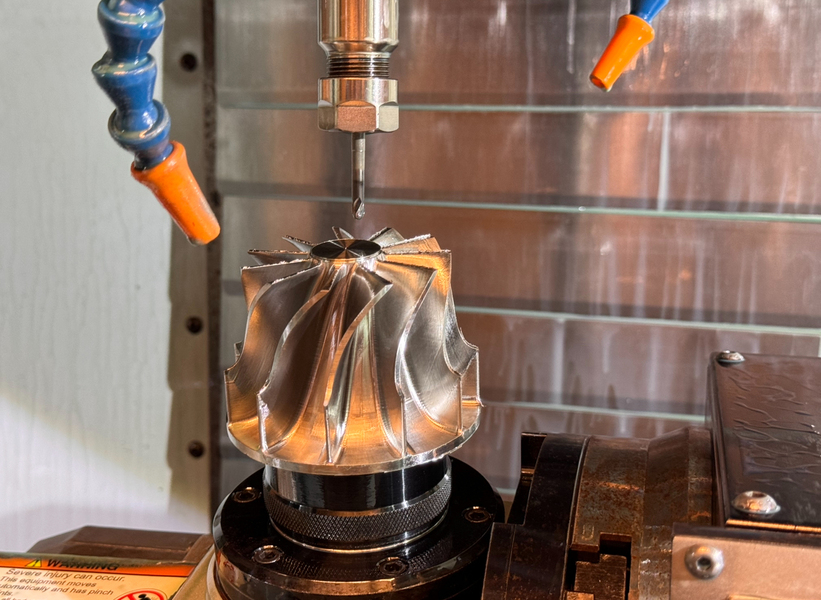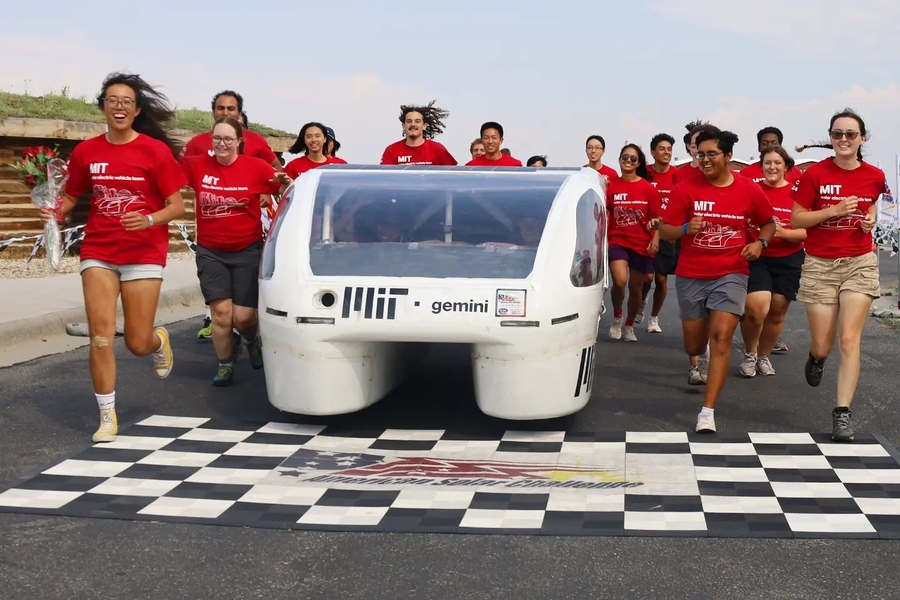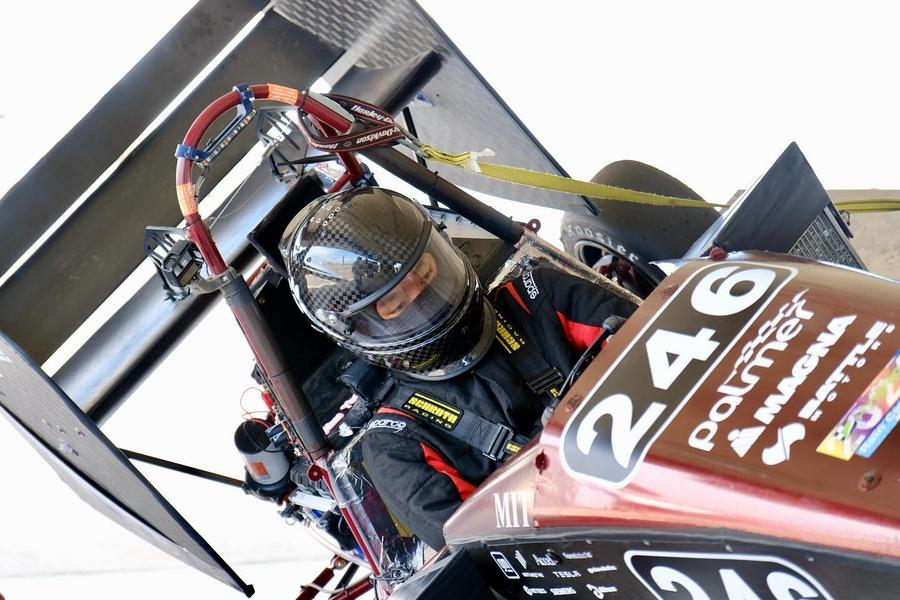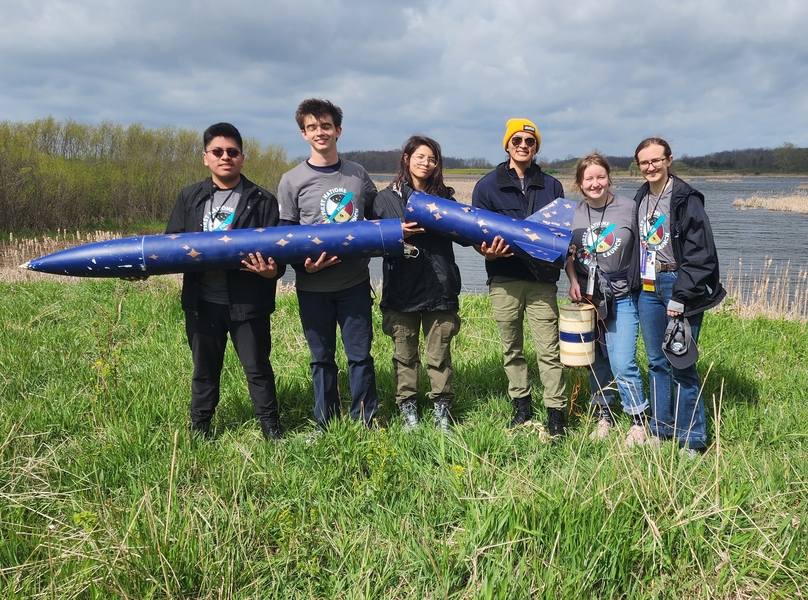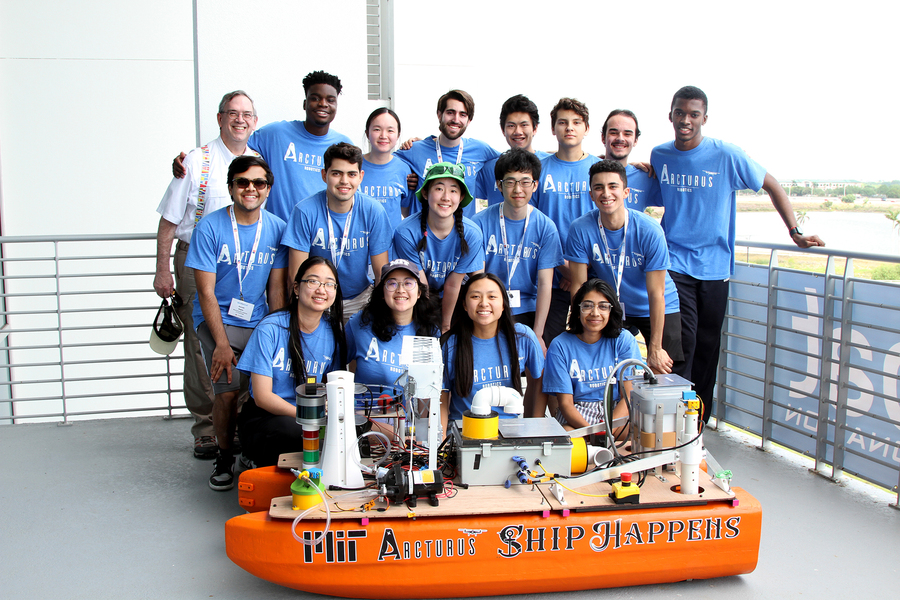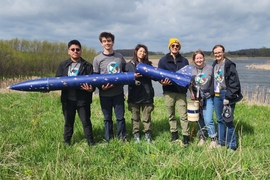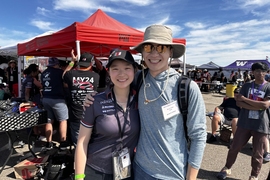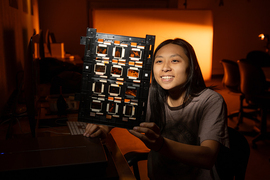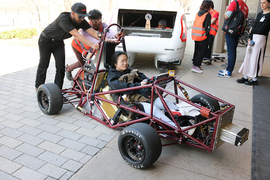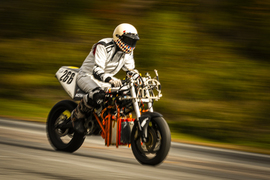Climate anxiety affects nearly half of young people aged 16-25. Students like second-year Rachel Mohammed find hope and inspiration through her involvement in innovative climate solutions, working alongside peers who share her determination. “I’ve met so many people at MIT who are dedicated to finding climate solutions in ways that I had never imagined, dreamed of, or heard of. That is what keeps me going, and I’m doing my part,” she says.
Hydrogen-fueled engines
Hydrogen offers the potential for zero or near-zero emissions, with the ability to reduce greenhouse gases and pollution by 29 percent. However, the hydrogen industry faces many challenges related to storage solutions and costs.
Mohammed leads the hydrogen team on MIT’s Electric Vehicle Team (EVT), which is dedicated to harnessing hydrogen power to build a cleaner, more sustainable future. EVT is one of several student-led build teams at the Edgerton Center focused on innovative climate solutions. Since its founding in 1992, the Edgerton Center has been a hub for MIT students to bring their ideas to life.
Hydrogen is mostly used in large vehicles like trucks and planes because it requires a lot of storage space. EVT is building their second iteration of a motorcycle based on what Mohammed calls a “goofy hypothesis” that you can use hydrogen to power a small vehicle. The team employs a hydrogen fuel cell system, which generates electricity by combining hydrogen with oxygen. However, the technology faces challenges, particularly in storage, which EVT is tackling with innovative designs for smaller vehicles.
Presenting at the 2024 World Hydrogen Summit reaffirmed Mohammed’s confidence in this project. “I often encounter skepticism, with people saying it’s not practical. Seeing others actively working on similar initiatives made me realize that we can do it too,” Mohammed says.
The team’s first successful track test last October allowed them to evaluate the real-world performance of their hydrogen-powered motorcycle, marking a crucial step in proving the feasibility and efficiency of their design.
MIT’s Sustainable Engine Team (SET), founded by junior Charles Yong, uses the combustion method to generate energy with hydrogen. This is a promising technology route for high-power-density applications, like aviation, but Yong believes it hasn’t received enough attention. Yong explains, “In the hydrogen power industry, startups choose fuel cell routes instead of combustion because gas turbine industry giants are 50 years ahead. However, these giants are moving very slowly toward hydrogen due to its not-yet-fully-developed infrastructure. Working under the Edgerton Center allows us to take risks and explore advanced tech directions to demonstrate that hydrogen combustion can be readily available.”
Both EVT and SET are publishing their research and providing detailed instructions for anyone interested in replicating their results.
Running on sunshine
The Solar Electric Vehicle Team powers a car built from scratch with 100 percent solar energy.
The team’s single-occupancy car Nimbus won the American Solar Challenge two years in a row. This year, the team pushed boundaries further with Gemini, a multiple-occupancy vehicle that challenges conventional perceptions of solar-powered cars.
Senior Andre Greene explains, “the challenge comes from minimizing how much energy you waste because you work with such little energy. It’s like the equivalent power of a toaster.”
Gemini looks more like a regular car and less like a “spaceship,” as NBC’s 1st Look affectionately called Nimbus. “It more resembles what a fully solar-powered car could look like versus the single-seaters. You don’t see a lot of single-seater cars on the market, so it’s opening people’s minds,” says rising junior Tessa Uviedo, team captain.
All-electric since 2013
The MIT Motorsports team switched to an all-electric powertrain in 2013. Captain Eric Zhou takes inspiration from China, the world’s largest market for electric vehicles. “In China, there is a large government push towards electric, but there are also five or six big companies almost as large as Tesla size, building out these electric vehicles. The competition drives the majority of vehicles in China to become electric.”
The team is also switching to four-wheel drive and regenerative braking next year, which reduces the amount of energy needed to run. “This is more efficient and better for power consumption because the torque from the motors is applied straight to the tires. It’s more efficient than having a rear motor that must transfer torque to both rear tires. Also, you’re taking advantage of all four tires in terms of producing grip, while you can only rely on the back tires in a rear-wheel-drive car,” Zhou says.
Zhou adds that Motorsports wants to help prepare students for the electric vehicle industry. “A large majority of upperclassmen on the team have worked, or are working, at Tesla or Rivian.”
Former Motorsports powertrain lead Levi Gershon ’23, SM ’24 recently founded CRABI Robotics — a fully autonomous marine robotic system designed to conduct in-transit cleaning of marine vessels by removing biofouling, increasing vessels’ fuel efficiency.
An Indigenous approach to sustainable rockets
First Nations Launch, the all-Indigenous student rocket team, recently won the Grand Prize in the 2024 NASA First Nations Launch High-Power Rocket Competition. Using Indigenous methodologies, this team considers the environment in the materials and methods they employ.
“The environmental impact is always something that we consider when we’re making design decisions and operational decisions. We’ve thought about things like biodegradable composites and parachutes,” says rising junior Hailey Polson, team captain. “Aerospace has been a very wasteful industry in the past. There are huge leaps and bounds being made with forward progress in regard to reusable rockets, which is definitely lowering the environmental impact.”
Collecting climate change data with autonomous boats
Arcturus, the recent first-place winner in design at the 16th Annual RoboBoat Competition, is developing autonomous surface vehicles that can greatly aid in marine research. “The ocean is one of our greatest resources to combat climate change; thus, the accessibility of data will help scientists understand climate patterns and predict future trends. This can help people learn how to prepare for potential disasters and how to reduce each of our carbon footprints,” says Arcturus captain and rising junior Amy Shi.
“We are hoping to expand our outreach efforts to incorporate more sustainability-related programs. This can include more interactions with local students to introduce them to how engineering can make a positive impact in the climate space or other similar programs,” Shi says.
Shi emphasizes that hope is a crucial force in the battle against climate change. “There are great steps being taken every day to combat this seemingly impending doom we call the climate crisis. It’s important to not give up hope, because this hope is what’s driving the leaps and bounds of innovation happening in the climate community. The mainstream media mostly reports on the negatives, but the truth is there is a lot of positive climate news every day. Being more intentional about where you seek your climate news can really help subside this feeling of doom about our planet.”
